Posts Tagged: oil painting
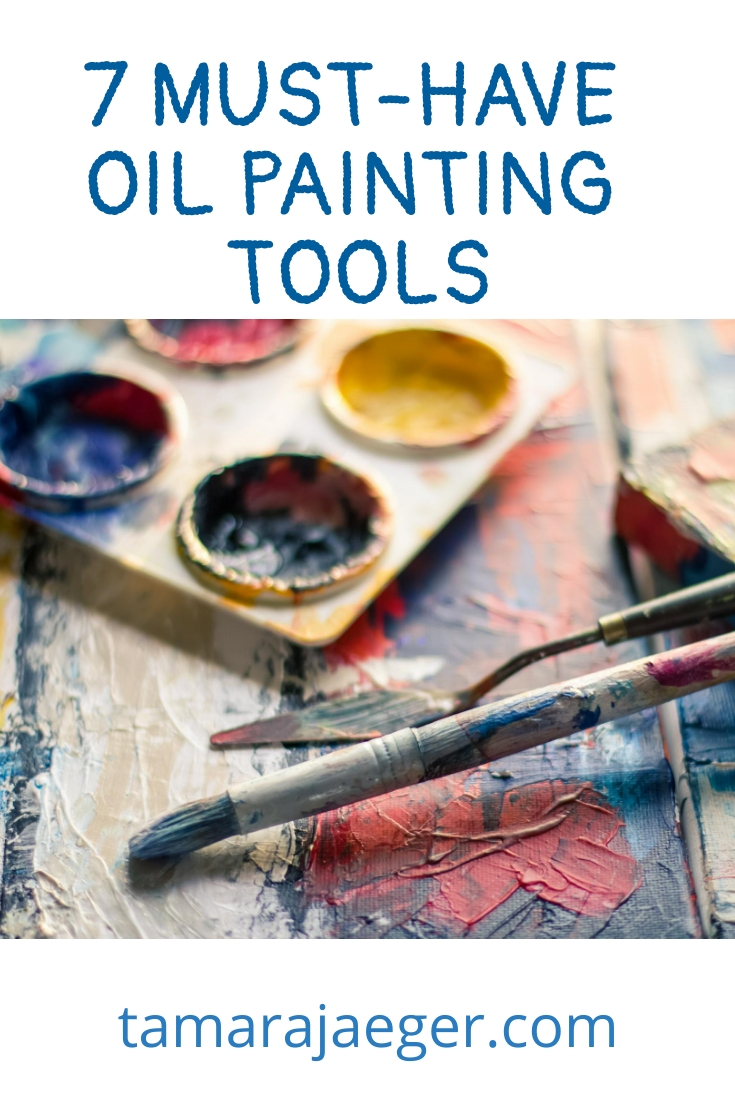

7 Must-Have Oil Painting Tools
Today I’d like to give a quick round-up of the tools I find indispensable when painting in oils. My must-have tools for acrylics are somewhat different, due to the different types of paintings I create with the different mediums. I’ll do a post on my favorite tools for acrylic painting at some point soon!

1. Tube wringer
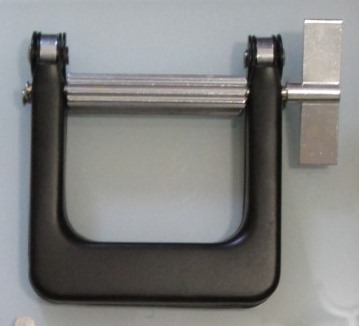
I love this thing. It’s fantastically sturdy and heavy duty. It squeezes even the largest tubes with ease and doesn’t slip on the tube during use like some of the less expensive ones do. It does a fantastic job of squeezing out the last bits of paint from the tube, so you don’t waste any.


I use this primarily to mix paints on my palette. I have a whole set of various palette and painting knives, but mostly I just use this one. (In case you were wondering, a palette knife has a straight or very slightly bent handle while a painting knife has a large bend in the shaft between the handle and blade)
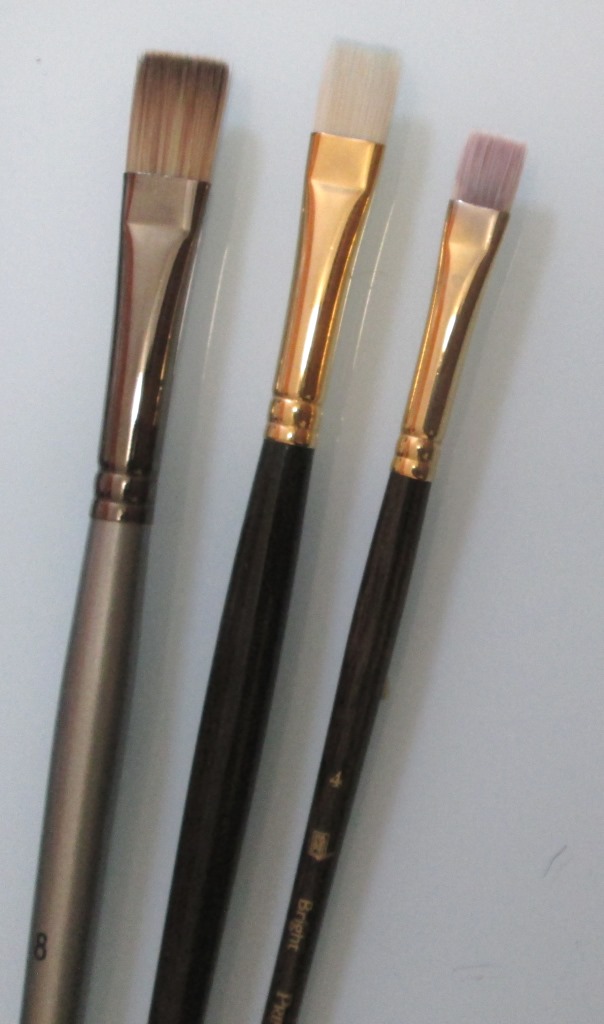
My favorite brush is the ‘bright.’ It’s a shorter version of the square-shaped ‘flat’ brush. I use these in a variety of sizes and tend to have multiples of each size so I don’t have to clean them off when I switch colors during a painting session. I also prefer the softer synthetic bristle brushes to the traditional bristle brushes.
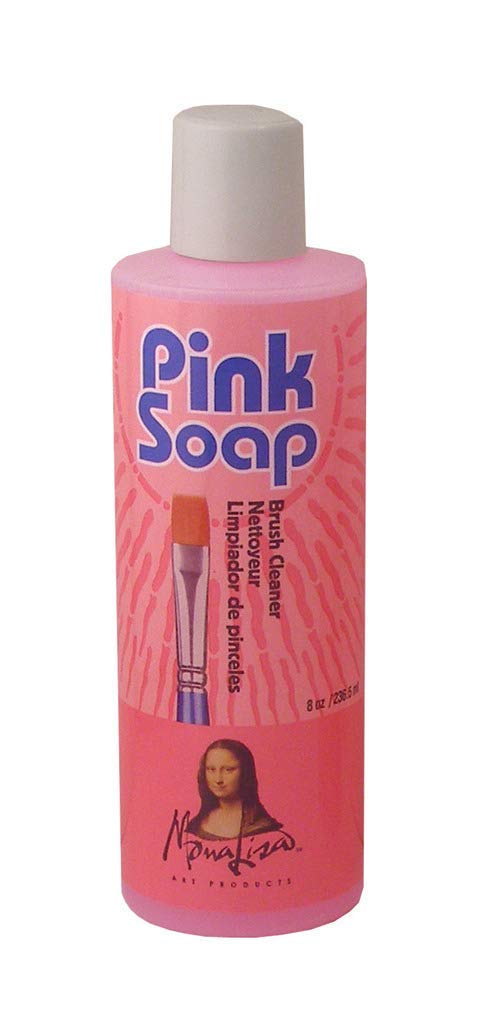
This stuff is amazing. I first discovered it during college when I was taking a painting class, though it was my mother, who worked at Michaels at the time, who introduced me to it. It does a great job of removing paint residue from brushes (and clothes, I’ve been told, though I haven’t tried it for that myself) and hands. The scent is pleasant and not overpowering and it works very well for cleaning up both acrylic and water-mixable oils. I also used it to finish cleaning my brushes after cleaning them with turpentine/turpenoid when I was using traditional oils. They seem to have changed the name recently, as my newest bottle calls it Speedball Pink Soap.

Another fantastic invention. My mother gave me one as a gift once and I wish I had found it sooner. It’s great for tidying up edges and removing slight mistakes when your paint is still wet. There are two ends—a pointed, cylindrical one and a straight-edged wedge end. I use the wedge end almost exclusively.
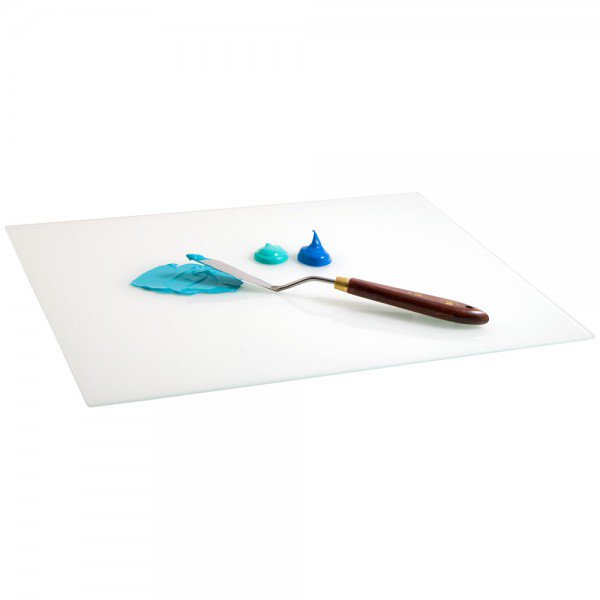
My all-time favorite palette. I searched long and hard for something like we used in my painting class, which were glass-topped cabinets on wheels. I like to have my palette on the table next to me when I paint rather than holding it in my hand. I love how easy it is to clean off the palette too. Which brings me to the last item in my list:


I use this to clean off my glass palette. Once the paint dries, all you have to do is gently scrape the palette and all the paint comes right off. You do have to take care with the angle of the blade while you’re scraping, to prevent scratching the glass. The scraper takes a standard razor blade which you can reverse so the sharp end is inside the handle for storage. I found mine in a small, local art supply store in Connecticut but I’ve also seen them in the paint departments in stores like Home Depot and Lowes. They’re inexpensive and so worth it!
What are your favorite painting tools? Tell me in the comments below.
* Please note that this post contains affiliate links and any sales made through such links will reward me a small commission – at no extra cost for you.
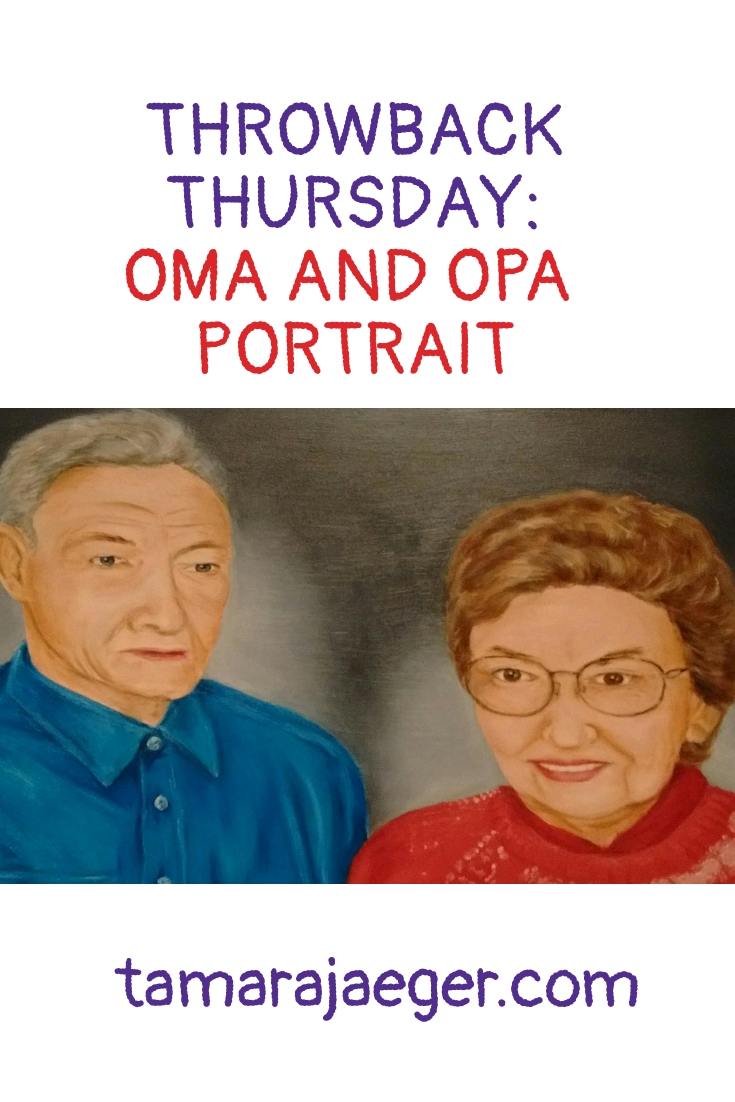

Throwback Thursday: Oma & Opa portrait
This is a fairly old piece and one of the Very, very rare paintings I’ve done of people. I don’t like using people in my artwork and portraits in particular are frustrating to me. I can paint a person, and it looks like a person. It even looks like the person it’s supposed to be. But it always seems to be missing that special something that really captures the essence of the person. Strangely, I don’t seem to have the same problem when I create portraits of animals. I’m not sure what the difference is there…
Anyway, this is an oil painting portrait of my grandparents (Oma and Opa are ‘grandma’ and ‘grandpa’ in German). I don’t remember the exact date—I painted it right before one of the times that I moved to the UK. I think it was the first time, so it’s probably from 1997.

After immigrating to the US from Germany, my Oma wanted to have a house full of oil paintings. She associated them with being well-off financially, I think. And actually, she Did end up having a house full of oil paintings, so I guess that dream was realized! I painted this portrait of my Oma and Opa as a gift for my Oma. What better gift for her than an oil painting, right? And it hung on the wall with all her family photos for years.
Oma passed away a few months ago, at almost 95 years old. She and I shared a birthday, which always seemed like a special thing. With my birthday coming up next week, I’ve been thinking about my Oma, so I thought I’d share this special piece in remembrance of her.
Want to keep updated and see more of what I’m working on? Sign up for my mailing list here and get a totally FREE digital download of a tiger linocut print. (I promise not to be spammy with my emails—I hate that too!)
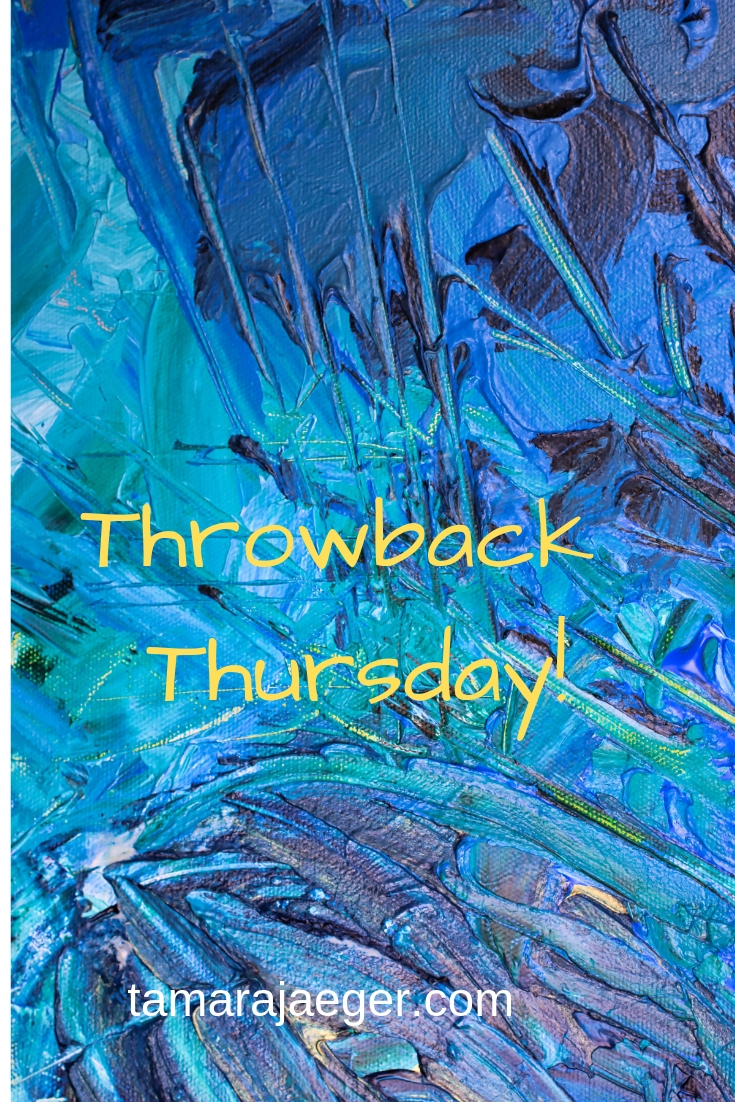

Throw Back Thursday: “Bressay” oil painting
During my first undergraduate degree, I spent my Junior year abroad in Aberdeen, Scotland. I truly loved living in Scotland and would go back again in a heartbeat. During that year I traveled through Europe and a bit in Scotland as well. One of my trips was to visit the Shetland and Orkney Islands in the far (faaaaarrr) north of Scotland. Both places are fascinating, though incredibly different from each other despite being relatively close together.
The Shetland Islands are the farthest northern point of the United Kingdom. The ferry ride from Aberdeen takes 14 hours. The Shetlands are wild and windswept and bare, with no trees in sight. No traffic lights either! There are a number of prehistoric ruins as well as a wealth of wildlife—particularly sea birds, including Puffins.
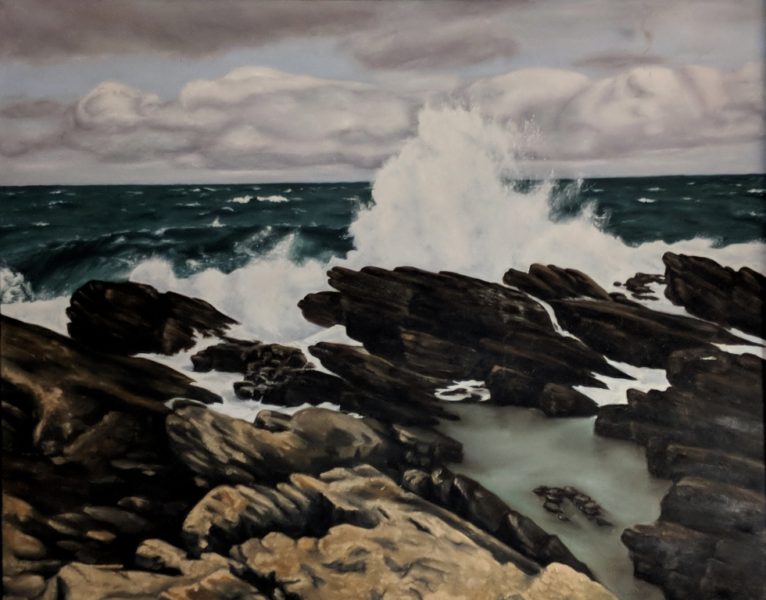
After I returned to the US, while finishing my degree, I created this painting of Bressay Island in the Shetlands. You can take a ferry from the Shetland mainland to Bressay, which is a great place for walking and bird watching. I spent some time watching the waves crashing against the rocky coast, and tried to capture the power and awe I felt at the sight in this piece. The rocky coastline also reminds me a bit of the coast of Maine, where I spent a lot of summers when I was growing up.
“Bressay” is done in oil on canvas and since it’s one of my earlier pieces, I used traditional oil paints. I’ve since switched over to water-mixable oils for the most part, since they don’t require the use of solvents. I enjoy working in oils—it’s by far my favorite medium for painting. I typically work in acrylics for my abstract pieces and oils for my more realistic paintings. Though I’m considering trying oils for some abstract pieces, simply because I enjoy working with them more. I’ve also been focusing on my torn paper collages lately, which hasn’t left a lot of time for painting. That’s something I need to work on, I suppose!
What is your favorite art medium? Are there any mediums you want to work more in or have been wanting to try? What places inspire you to create art?